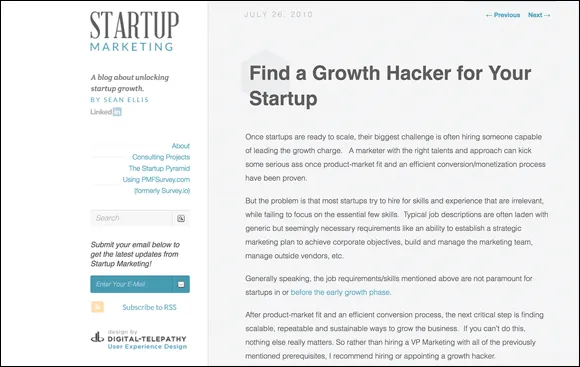
- English
- ePUB (mobile friendly)
- Available on iOS & Android
Growth Hacking For Dummies
About this book
Hack your business growth the scientific way
Airbnb. Uber. Spotify. To join the big fish in the disruptive digital shark tank you need to get beyond siloed sales and marketing approaches. You have to move ahead fast—with input from your whole organization—or die. Since the early 2010s, growth hacking culture has developed as the way to achieve this, pulling together multiple talents—product managers, data analysts, programmers, creatives, and yes, marketers—to build a lean, mean, iterative machine that delivers the swift sustainable growth you need to stay alive and beat the competition.
Growth Hacking for Dummies provides a blueprint for building the machine from the ground-up, whether you're a fledgling organization looking for ways to outperform big budgets and research teams, or an established business wanting to apply emerging techniques to your process. Written by a growth thought leader who learned from the original growth hacking gurus, you'll soon be an expert in the tech world innovations that make this the proven route to the big time: iteration, constant testing, agile approaches, and flexible responses to your customers' evolving needs.
- Soup to nuts: get a full overview of the growth hacking process and tools
- Appliance of science: how to build and implement concept-testing models
- Coming together: pick up best practices for building a cross-disciplinary team
- Follow the data: find out what your customers really want
You know you can't just stay still—start moving ahead by developing the growth hacking mindset that'll help you win big and leave the competition dead in the water!
Frequently asked questions
- Essential is ideal for learners and professionals who enjoy exploring a wide range of subjects. Access the Essential Library with 800,000+ trusted titles and best-sellers across business, personal growth, and the humanities. Includes unlimited reading time and Standard Read Aloud voice.
- Complete: Perfect for advanced learners and researchers needing full, unrestricted access. Unlock 1.4M+ books across hundreds of subjects, including academic and specialized titles. The Complete Plan also includes advanced features like Premium Read Aloud and Research Assistant.
Please note we cannot support devices running on iOS 13 and Android 7 or earlier. Learn more about using the app.
Information
Getting Started with Growth Hacking
Defining Growth Hacking




Defining Growth Hacking Goals
https://andrewchen.co/how-to-be-a-growth-hacker-an-airbnbcraigslist-case-study), when the phrase truly entered mainstream consciousness.
- Growth had to be sustainable. You cannot build a sustainable business if it’s one that doesn’t continue to deliver value over time. Unfortunately, we don’t live in a world where people give us money for nothing on an ongoing basis. So, we must provide value. And, given that this is a business and all businesses must grow, it follows that the value we deliver must also grow over time.
- Sustainability is a function of scalable and repeatable activities. When something is repeatable, it’s a process. When an activity or a process is scalable, it means that it can adapt to larger demands — whether that’s more users or some other business need — leading to greater stability and competitiveness, which in turn helps growth be sustainable. This also tells us that it will never be just one thing that does the trick — it will always be a combination of many elements working together, each playing its part and leading the way to explosive growth.
- These scalable and repeatable ways to build a sustainable business would have to be found. By definition, there are no silver bullets. Every business is different. Every context and every audience has its own variables. What works in one instance isn’t guaranteed to work in another. You will have to put in the hard work of seeing what works (and doesn’t work) for you. The only way to find what works is to just try things out and see what happens. It also follows that, to see what works, those things must be testable and measurable to understand their impact. The more things you try and the faster you try them, the quicker you’ll learn about what truly delivers value to your customers.
Working through the Basics

- Identify your North Star Metric (NSM).The NSM is the number that quantifies the value your product provides to your users or customers. Every product will have its own NSM because every product provides value differently. (Google provides value through search results, for example, whereas Lyft provides value with rides on demand.) When I’ve asked people what number quantifies the value their product delivers to their users, it generally is the first time they’ve been asked that question. I then get silence followed mostly by their statement that their NSM is revenue or money — and they're mostly wrong when they say that.Chapter 6 goes into more detail on this topic, along with examples.
- Analyze your growth model.If every product provides value differently, then the way to grow every product also cannot be the same. Too many dif...
Table of contents
- Cover
- Table of Contents
- Introduction
- Part 1: Getting Started with Growth Hacking
- Part 2: Seeing Where Growth Opportunities Come From
- Part 3: Applying the Growth Hacking Process
- Part 4: The Part of Tens
- Glossary
- Index
- About the Author
- Advertisement Page
- Connect with Dummies
- End User License Agreement

